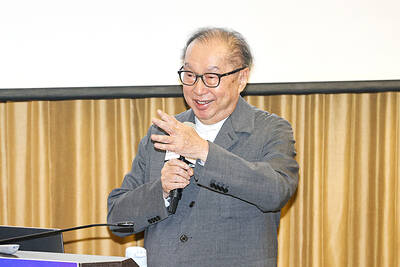CSMC Technologies Corp (
The plant, planned for 2007, will make standard 8-inch chip wafers, adding to the company's three less-advanced, 6-inch wafer manufacturing lines in Wuxi, west of Shanghai, Chief Financial Officer Frank Lai said. This year, CSMC will double capacity on those lines to 55,000 wafers a month.
The news comes as Taiwanese rivals, leaders in the so-called foundry business, run factories at capacity amid a global recovery in chip demand after a near three-year slump. China's foundry capacity will jump 75 percent to the equivalent of 2 million 8-inch wafers this year, Gartner Inc. has forecasted. That will account for 12 percent of the world's total, compared with 4.6 percent in 2002, the company said.
CSMC's customers include Japan's Fujitsu Ltd and China's Hangzhou Silan Microelectronics Co (
United Microelectronics Corp (UMC,
Founded in 1997 by Peter Chen, the former chief executive of Taiwanese chipmaker Mosel Vitelic Inc (
CSMC focuses on making silicon wafers six inches in diameter, two generations behind the most advanced equipment used today to produce 12-inch wafers. Chinese companies, which enjoy lower wage and land costs, can sell the chips at cheaper prices.
Last year, CSMC bought a 6-inch wafer production line from Agere Systems Inc, a spin-off from Lucent Technologies Inc, and one from Chartered Semiconductor.

BYPASSING CHINA TARIFFS: In the first five months of this year, Foxconn sent US$4.4bn of iPhones to the US from India, compared with US$3.7bn in the whole of last year Nearly all the iPhones exported by Foxconn Technology Group (富士康科技集團) from India went to the US between March and last month, customs data showed, far above last year’s average of 50 percent and a clear sign of Apple Inc’s efforts to bypass high US tariffs imposed on China. The numbers, being reported by Reuters for the first time, show that Apple has realigned its India exports to almost exclusively serve the US market, when previously the devices were more widely distributed to nations including the Netherlands and the Czech Republic. During March to last month, Foxconn, known as Hon Hai Precision Industry

Taiwan Semiconductor Manufacturing Co (TSMC, 台積電) and the University of Tokyo (UTokyo) yesterday announced the launch of the TSMC-UTokyo Lab to promote advanced semiconductor research, education and talent development. The lab is TSMC’s first laboratory collaboration with a university outside Taiwan, the company said in a statement. The lab would leverage “the extensive knowledge, experience, and creativity” of both institutions, the company said. It is located in the Asano Section of UTokyo’s Hongo, Tokyo, campus and would be managed by UTokyo faculty, guided by directors from UTokyo and TSMC, the company said. TSMC began working with UTokyo in 2019, resulting in 21 research projects,

Ashton Hall’s morning routine involves dunking his head in iced Saratoga Spring Water. For the company that sells the bottled water — Hall’s brand of choice for drinking, brushing his teeth and submerging himself — that is fantastic news. “We’re so thankful to this incredible fitness influencer called Ashton Hall,” Saratoga owner Primo Brands Corp’s CEO Robbert Rietbroek said on an earnings call after Hall’s morning routine video went viral. “He really helped put our brand on the map.” Primo Brands, which was not affiliated with Hall when he made his video, is among the increasing number of companies benefiting from influencer

Quanta Computer Inc (廣達) chairman Barry Lam (林百里) yesterday expressed a downbeat view about the prospects of humanoid robots, given high manufacturing costs and a lack of target customers. Despite rising demand and high expectations for humanoid robots, high research-and-development costs and uncertain profitability remain major concerns, Lam told reporters following the company’s annual shareholders’ meeting in Taoyuan. “Since it seems a bit unworthy to use such high-cost robots to do household chores, I believe robots designed for specific purposes would be more valuable and present a better business opportunity,” Lam said Instead of investing in humanoid robots, Quanta has opted to invest